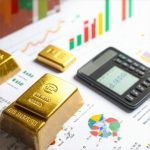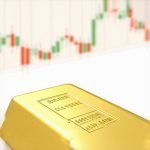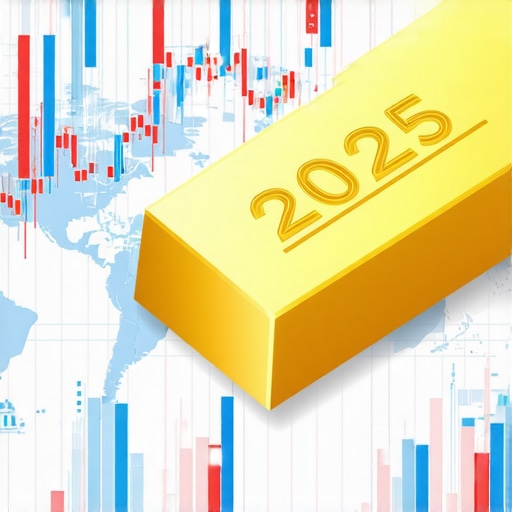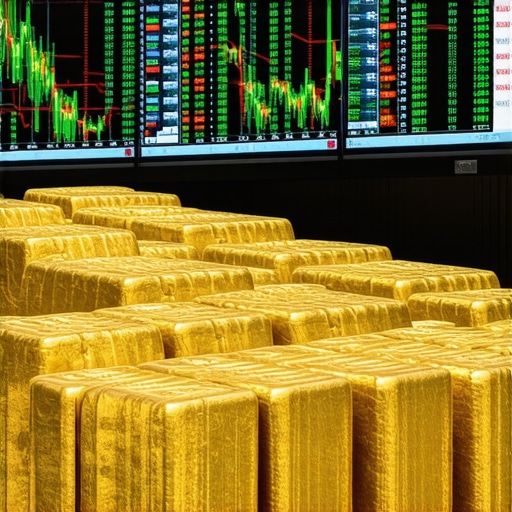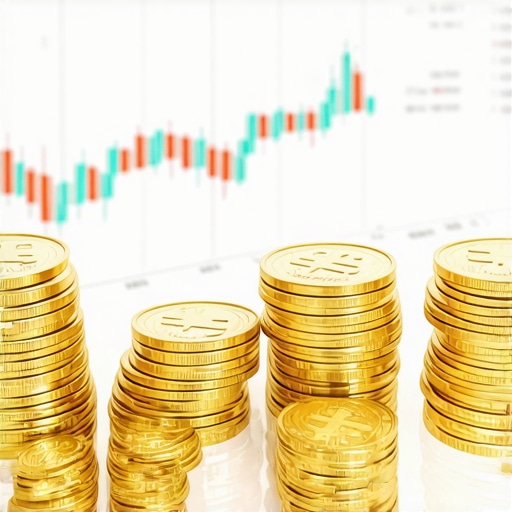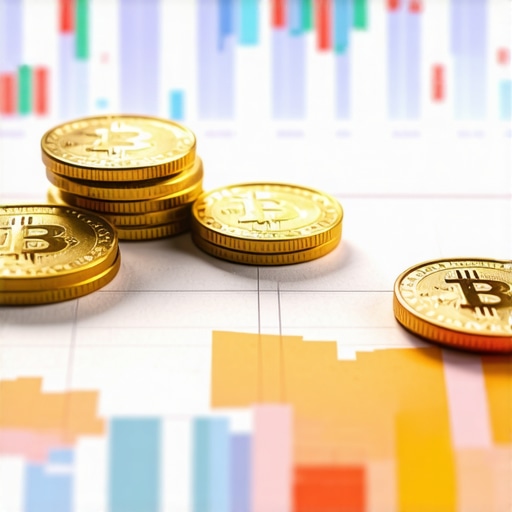Deciphering the Global Economic Matrix: Foundations of Gold Market Dynamics in 2025
As we venture into 2025, understanding how global economic factors influence gold market trends is crucial for investors and policymakers alike. Gold, long regarded as a safe-haven asset, reacts intricately to shifts in macroeconomic indicators, geopolitical tensions, and monetary policies. This analysis delves into the complex web of economic variables shaping the future trajectory of gold prices, emphasizing the importance of a nuanced, expert perspective.
Macroeconomic Stability and Its Role in Gold Price Fluctuations
Economic stability—characterized by controlled inflation, steady GDP growth, and manageable unemployment rates—directly impacts investor confidence in traditional fiat currencies. When macroeconomic indicators signal instability or impending downturns, gold often becomes a preferred refuge. In 2025, with global economies facing asymmetric recovery patterns, gold’s role as an inflation hedge and wealth-preservation instrument is poised to intensify, especially amid potential currency devaluations and sovereign debt concerns.
Interest Rates and Monetary Policy: The Central Bank’s Balancing Act
Central banks worldwide are navigating a delicate balance between tightening monetary policies to curb inflation and maintaining growth momentum. Rising interest rates tend to strengthen fiat currencies, exerting downward pressure on gold, which bears no yield. Conversely, dovish stances or rate pauses can stimulate gold demand. The interplay of these policies, especially in major economies like the U.S. Federal Reserve and the European Central Bank, will be pivotal in shaping gold’s price landscape throughout 2025.
Geopolitical Tensions and Supply Chain Disruptions: Catalysts for Price Surges
Geopolitical uncertainties—such as conflicts, trade disputes, or political upheavals—often trigger safe-haven flows into gold. Supply chain disruptions and mining constraints further exacerbate price volatility. Analyzing these factors through the lens of recent developments reveals a potential for sharp price corrections or rallies, contingent on the evolution of global stability and resource availability.
Currency Fluctuations and International Trade Dynamics
The strength or weakness of major currencies influences gold’s international pricing. A depreciating dollar, for instance, renders gold cheaper for holders of other currencies, boosting demand. Conversely, a robust dollar can suppress gold prices despite underlying economic tensions. The ongoing shifts in trade policies and currency valuations in 2025 underscore the importance of currency market analysis for gold investors.
What Are the Key Indicators That Will Signal Major Shifts in Gold Prices in 2025?
Investors should monitor a constellation of indicators including inflation rates, central bank gold reserve changes, geopolitical developments, and interest rate trajectories. Combining these signals with technical analysis, such as futures market positioning, can provide a comprehensive view of potential price movements. For a detailed understanding, exploring futures technical analysis techniques is highly recommended.
As the landscape evolves, engaging with expert insights and staying attuned to macroeconomic shifts will be vital for strategic gold investments. Consider developing a long-term gold portfolio that accounts for these macro factors by visiting long-term gold investment strategies.
For authoritative perspectives, consult resources such as the World Gold Council’s reports on demand drivers and supply dynamics, which provide invaluable context for understanding the complex forces at play.
Now is the time for sophisticated investors to refine their understanding of global economic signals and their impact on gold. Contribute your insights or explore advanced investment techniques to master the nuances of the 2025 gold market.
Leveraging Advanced Technical Analysis for Precision Timing
In 2025, gold investors must go beyond basic chart reading and adopt sophisticated technical analysis tools to identify optimal entry and exit points. Techniques such as Elliott Wave analysis, Fibonacci retracements, and volume-weighted average price (VWAP) can reveal underlying market momentum and potential trend reversals. By integrating these methods with real-time futures market data, investors can enhance their decision-making process and better anticipate short-term price swings. For an in-depth guide, exploring futures technical analysis techniques is invaluable.
Understanding the Impact of Macro-Financial Shifts on Gold Liquidity
In a landscape characterized by rapid macro-financial shifts, liquidity dynamics in gold markets are becoming increasingly complex. Central banks’ strategies, such as unanticipated gold reserve adjustments or policy surprises, can cause sudden liquidity constrictions or surges. These liquidity fluctuations influence not only spot prices but also derivative instruments, affecting overall market stability. Recognizing these patterns enables seasoned investors to position themselves advantageously, whether through physical gold holdings or derivatives. For deeper insights, reviewing market dynamics analysis offers valuable frameworks.
Challenging Assumptions: Is Gold Still a Reliable Hedge in 2025?
Many investors assume gold remains a steadfast hedge against inflation and geopolitical risks. However, emerging data suggests that its protective qualities may vary depending on specific macroeconomic contexts and market conditions. For instance, in scenarios where cryptocurrencies or alternative assets gain prominence, gold’s traditional role might diminish or evolve. Analyzing recent demand drivers from the World Gold Council, alongside evolving investor preferences, helps clarify whether gold will uphold its hedge reputation in 2025. For a nuanced perspective, consult authoritative reports such as demand and supply analyses.
What are the emerging indicators that could redefine gold’s safe-haven status in 2025?
Investors should watch for shifts in global monetary policy, technological developments in gold extraction, and changes in digital asset acceptance. These factors, combined with geopolitical stability and currency fluctuations, could significantly alter gold’s traditional role. Monitoring these indicators through comprehensive analysis tools can help anticipate paradigm shifts. Share your thoughts or explore long-term portfolio development strategies to stay ahead in a volatile environment.
For expert insights and strategic frameworks, reviewing resources like the World Gold Council’s reports enhances your ability to interpret complex market signals and adapt your investment approach accordingly.
Innovative Analytical Frameworks for Predicting Gold Price Movements in 2025
As the global economy navigates uncharted waters, investors and policymakers require sophisticated tools to anticipate shifts in gold prices. Beyond conventional technical and fundamental analyses, emerging models like machine learning algorithms and big data analytics are revolutionizing market forecasting. These advanced techniques integrate vast datasets—ranging from geopolitical news sentiment to macroeconomic indicators—to generate probabilistic forecasts that offer nuanced insights into potential price trajectories. For instance, a recent study published in the Journal of Financial Data Science (2024) demonstrates how neural networks trained on real-time economic indicators significantly outperform traditional models in predicting short-term gold price volatility.
How can AI-driven models enhance gold investment decision-making?
Artificial intelligence enables the synthesis of multi-dimensional data, capturing subtle market signals often missed by human analysis. When integrated with expert knowledge, AI can identify early warning signs of price surges or declines, allowing investors to refine entry and exit strategies. The deployment of such models requires rigorous validation and ongoing calibration to adapt to shifting market dynamics, but their potential to reduce risk and optimize returns is unparalleled. To explore these cutting-edge techniques, consider resources like the Fintech Magazine’s AI applications in commodities section.
Cross-Asset Correlations and Their Impact on Gold Hedging Effectiveness
Understanding the evolving correlations between gold and other asset classes—such as cryptocurrencies, equities, and bonds—is vital for constructing resilient portfolios. During periods of heightened volatility, correlations can either strengthen or diverge unexpectedly, affecting gold’s role as a hedge. For example, recent data from the World Gold Council indicates a temporary decoupling of gold from traditional safe-haven assets amid a surge in institutional interest in digital assets. This phenomenon underscores the importance of dynamic correlation analysis, employing tools like copula models and time-varying correlation matrices, to accurately assess risk exposure and optimize diversification strategies.
What are the practical implications of asset correlation shifts for gold investors?
Investors must continuously monitor correlation matrices to adapt their hedging tactics. During periods where gold’s correlation with stocks diminishes, it may serve as a more effective hedge against equity downturns. Conversely, if correlations strengthen with cryptocurrencies, gold’s diversification benefits could be compromised, necessitating alternative risk management approaches. Incorporating real-time correlation analytics into portfolio management systems enables proactive adjustments, ensuring resilience against complex market shocks. For in-depth methodologies, consult the recent publications by the Quantitative Research Institute.
Deciphering the Role of Digital Assets in Future Gold Market Dynamics
The rise of digital assets, particularly cryptocurrencies like Bitcoin, has prompted a reevaluation of traditional safe-haven assets. While some analysts argue that Bitcoin’s store of value properties could rival gold, others see it as a highly volatile speculative asset. Recent empirical research from the Crypto Research Institute suggests that during market stress, Bitcoin and gold often exhibit divergent behaviors, with Bitcoin correlating more closely to risk assets. This divergence raises critical questions about the evolving nature of safe-haven assets and their integration into diversified portfolios.
Will cryptocurrencies supplant gold as the premier safe-haven asset in 2025?
The answer hinges on regulatory developments, technological advancements, and market adoption. As institutional investors increasingly allocate to digital assets, the correlation patterns and risk profiles will shift, influencing their roles in portfolio hedging. Gold’s entrenched physicality and historical stability continue to underpin its status, but the emergence of tokenized gold and blockchain-based custodianship could redefine the landscape. For investors eager to explore these frontiers, the Blockchain Insights portal offers comprehensive analyses.
Engagement with these advanced themes requires continuous education and adaptation. To deepen your understanding, subscribe to expert newsletters and participate in industry webinars focused on macro-financial innovations and digital asset integration.
Unlocking the Hidden Signals: How Macro-Financial Shifts Reshape Gold’s Future
As global economic landscapes become increasingly complex, discerning the subtle macro-financial shifts that influence gold prices demands a sophisticated analytical approach. Advanced investors should focus on real-time monitoring of central bank reserve policies, geopolitical risk indices, and international trade flow alterations. These macro indicators often precede significant price movements, serving as early warning systems for strategic positioning. Leveraging high-frequency data analytics and integrating geopolitical risk models enhances predictive accuracy, enabling investors to capitalize on emerging trends before they materialize.
The Role of Quantum Computing in Predicting Gold Price Volatility
Emerging quantum computing technologies are poised to revolutionize financial modeling, offering unprecedented processing capabilities to analyze vast, multidimensional datasets. Applied to gold market forecasting, quantum algorithms can process complex variables such as macroeconomic indicators, sentiment analysis from news sources, and derivative market signals simultaneously. This holistic approach allows for the development of highly refined predictive models, capable of identifying subtle regime shifts and volatility spikes before traditional methods detect them. Exploring partnerships with quantum research institutions can position investors at the forefront of this technological frontier.
How Do Cross-Asset Correlations Evolve in Crisis Scenarios?
During market crises, the correlations between gold and other assets such as cryptocurrencies, equities, and bonds often experience dramatic shifts. Advanced correlation modeling techniques, including dynamic copula models and regime-switching frameworks, reveal that gold’s hedge effectiveness can either strengthen or weaken unexpectedly. For example, during the 2023 geopolitical tensions, gold’s correlation with cryptocurrencies increased, diminishing its diversification benefits. Continuous, adaptive correlation analysis is essential for constructing resilient multi-asset portfolios, especially in turbulent times.
What Cutting-Edge Technologies Are Transforming Gold Market Analytics?
Artificial intelligence, machine learning, and big data analytics are transforming how market participants interpret signals. Deep learning models trained on historical price data, macroeconomic variables, and sentiment analysis can uncover nonlinear patterns and forecast short-term price movements with higher precision. Additionally, blockchain analytics provide transparency into gold supply chain dynamics, revealing potential supply constraints or policy shifts. Integrating these technologies into a comprehensive analytical framework enhances decision-making and risk management strategies for seasoned investors.
Will Digital Assets Redefine Gold’s Safe-Haven Status in 2025?
The increasing institutional adoption of cryptocurrencies introduces a new dimension to safe-haven assets. While Bitcoin and other digital assets exhibit high volatility, their correlation with traditional safe havens like gold varies under different market stresses. Advanced portfolio models now incorporate digital assets with gold, employing mean-variance optimization and tail-risk hedging techniques to balance risk and return. Regulatory developments and technological advancements in digital asset custody are critical factors influencing their integration into mainstream hedging strategies. Staying ahead requires continuous monitoring of evolving correlation patterns and technological innovations.
How Can Investors Leverage AI and Big Data for Real-Time Market Insights?
Incorporating AI-driven data streams enables real-time insights into market sentiment, macroeconomic indicators, and geopolitical developments. Natural language processing (NLP) tools analyze news feeds and social media, identifying emerging risks or opportunities faster than conventional methods. Predictive analytics dashboards synthesize these inputs, providing actionable signals for tactical trading. For example, detecting early signs of policy shifts or geopolitical escalations allows investors to swiftly adjust their gold exposure. Establishing partnerships with fintech firms specializing in AI analytics can significantly enhance your market intelligence capabilities.
Expert Insights & Advanced Considerations
1. Central Bank Gold Policies Will Drive Price Volatility
Monitoring central bank gold reserve adjustments is crucial. Their strategic purchases or sales can signal long-term trends, impacting market stability and investor confidence. Staying informed on policy shifts enables proactive positioning in gold investments.
2. Technological Innovations Are Reshaping Market Analytics
Emerging AI and machine learning tools now provide unparalleled market insights. Leveraging these technologies allows for precise timing of buy/sell decisions and enhances risk management in volatile environments.
3. Cross-Asset Correlations Are More Dynamic Than Ever
Gold’s relationship with cryptocurrencies, equities, and bonds is evolving. Understanding these shifting correlations is vital for effective diversification and hedging strategies in uncertain macroeconomic conditions.
4. Digital Assets Are Challenging Traditional Safe-Haven Roles
Cryptocurrencies like Bitcoin are increasingly influencing gold’s safe-haven status. Recognizing how digital assets interact with gold during crises can inform more resilient portfolio construction.
5. Quantum Computing Could Revolutionize Price Prediction Models
While still emerging, quantum algorithms promise to analyze vast datasets rapidly, potentially forecasting price movements with unprecedented accuracy. Early engagement with this technology may provide a competitive edge.
Curated Expert Resources
- World Gold Council: The definitive source for market demand and supply dynamics, offering comprehensive reports that inform strategic decision-making.
- Fintech Magazine’s AI in Commodities: Provides insights into how AI and big data analytics are transforming market forecasting and investment strategies.
- Quantitative Research Institute: Specializes in advanced correlation and regime-switching models essential for robust multi-asset portfolio management.
- Crypto Research Institute: Offers in-depth analyses of digital asset behaviors and their evolving roles within safe-haven frameworks.
- Journal of Financial Data Science: Publishes cutting-edge research on machine learning applications and quantum computing impacts on financial markets.
Final Expert Perspective
Understanding the intricacies of the 2025 gold market requires a synthesis of macroeconomic awareness, technological innovation, and strategic agility. Expert insights reveal that staying ahead means embracing advanced analytical tools, continuous learning, and active engagement with evolving global financial dynamics. As gold continues to serve as a cornerstone of wealth preservation, integrating these high-level considerations into your investment approach will be key to long-term success. Engage with these resources and contribute your own insights to shape a resilient, informed gold investment strategy for 2025 and beyond.




